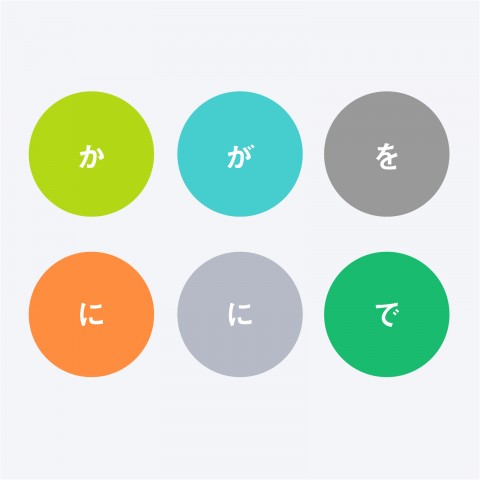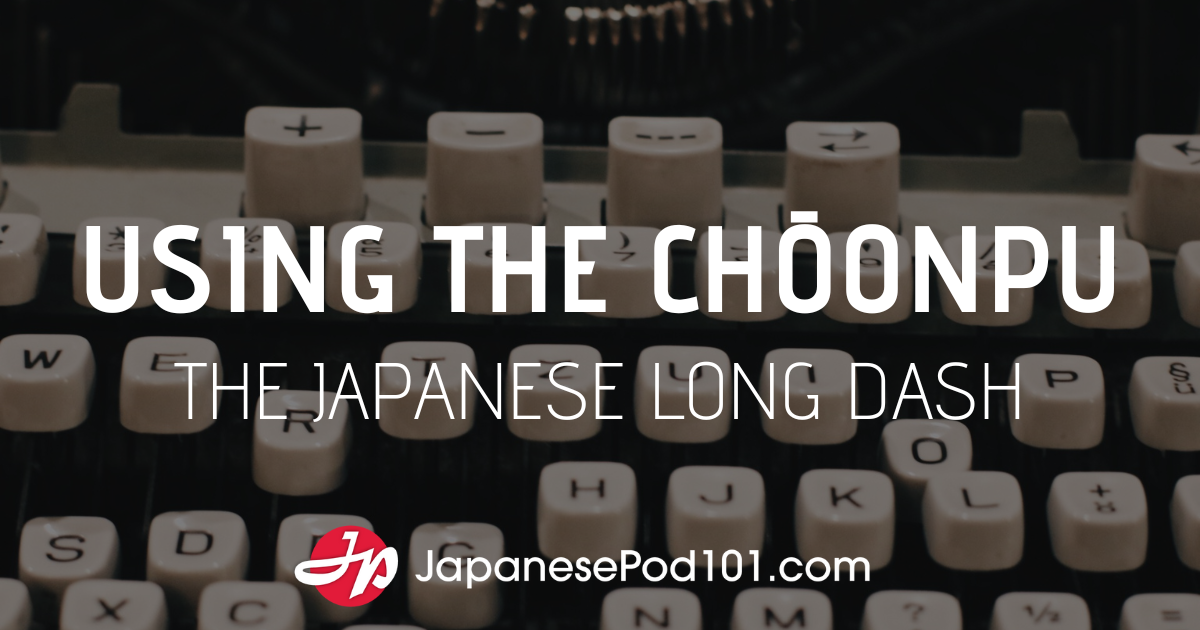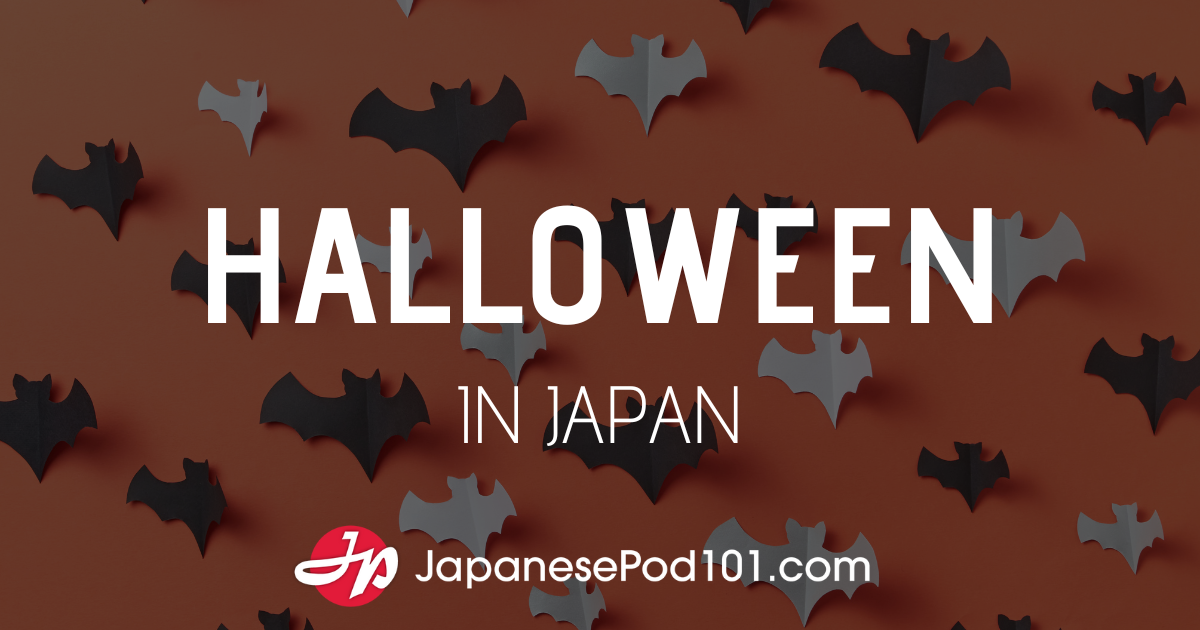Are you interested in learning Japanese and wondering where to start? Or have you been studying a while and want to know more about Japanese grammar and the logic behind it? Our easy guide to Japanese grammar will give you insight into the essentials of the Japanese language.
Japanese grammar works quite differently from that of English, but that doesn’t mean it’s more difficult. Some rules are actually much simpler and easier to understand than those in English or the Romance languages. For example, Japanese does not have articles, gender, or the singular/plural forms; Japanese has only the present and past tenses. Learning the characteristics of Japanese grammar will deepen your understanding of the language and accelerate your language acquisition.
Without further ado, JapanesePod101.com’s concise summary of Japanese grammar!
 Table of Contents
Table of Contents
- General Japanese Grammar Rules
- Nouns & Pronouns
- Verbs
- Adjectives
- Ancillary Words
- How JapanesePod101 Can Help You Learn More Japanese
1. General Japanese Grammar Rules
When written, Japanese sentences do not have spaces between the words like English does. This may be confusing for foreign learners at first, but you’ll quickly get used to it once you learn the basic rules. Here’s an example of what a Japanese sentence looks like:
- 私の母は仕事へ行きました。(“My mother went to work.”)
Keep in mind that literal translation from English to Japanese doesn’t work because the grammar rules and sentence structures are different.
Words, Phrases, and Sentences
- Words, or 単語 (tango), are the minimum unit in a sentence and cannot be reduced any further.
For example, this is a breakdown of each word in, “My mother went to work.”
| 私 (Watashi) | の (no) | 母 (haha) | は (wa) | 仕事 (shigoto) | に (ni) | 行きました。 (ikimashita.) |
| “I” | ” -‘s “ | “mother” | topic-particle | “work” | locative-particle | “went” |
- Phrases, or 文節 (bunsetsu), are the smallest coherent components that form a sentence.
Here’s a breakdown of the phrases in the same sentence:
| 私の (Watashi no) | 母は (haha wa) | 仕事に (shigoto ni) | 行きました。(ikimashita.) |
| “My” | “mother” | “to work” | “went” |
Japanese phrases are divided into the minimum components that still make sense (have meaning).
When breaking down a sentence, phrases are typically divided before 独立語 (dokuritsugo), or “independent words,” such as nouns, adjectives, and verbs.
- Sentences, or 文 (bun), are texts that end with 句点 (kuten), the punctuation mark (“。”), which is comparable to a full stop (“.”) in English.
Sentences consist of phrases, which typically contain a subject and a predicate to convey a statement or question. Sentences and phrases are also punctuated with 読点 (tōten), the Japanese comma (“、”).
今朝、私の母は仕事に行きました。(Kesa, watashi no haha wa shigoto ni ikimashita.)
“This morning, my mother went to work.”
Classification of Phrases
There are several types of Japanese phrases, classified by function. They include:
- 主語 (shu-go) – “subject”
- 述語 (jutsu-go) – “predicate”
- 修飾語 (shūshoku-go) – “modifier”
- 接続語 (setsuzoku-go) – “conjunction”
- 独立語 (dokuritsu-go) – “independent phrase”
Subject Phrase
A subject phrase indicates “what” or “who” in a sentence. It usually takes the form of a noun followed by a grammatical particle, such as は (wa), が (ga), orも (mo).
Examples:
- 私は学生です。(Watashi wa gakusei desu.) – “I am a student.”
- 彼も食べます。(Kare mo tabemasu.) – “He eats, too.”
Predicate Phrase
A predicate phrase explains something about the subject, usually what it is or what it’s like. The predicate is located at the end of a sentence.
Examples:
- 彼は医者です。(Kare wa isha desu.) – “He is a doctor.”
- その子は痩せています。(Sono ko wa yasete imasu.) – “That kid is skinny.”
Modifier Phrase
A modifier phrase adds detail to other phrases within a sentence.
Examples:
- 私は赤いりんごを買いました。(Watashi wa akai ringo o kaimashita.) – “I bought a red apple.”
Here, “a red apple” explains what “I bought.”
- 桜の花がとてもきれいです。(Sakura no hana ga totemo kirei desu.) – “Cherry blossoms are very beautiful.”
Here, “very” further explains “Cherry blossoms are beautiful.”
Conjunction Phrase
A conjunction phrase connects a phrase to a sentence, or one sentence to another sentence.
Examples:
- 私は雨が嫌いです。しかし、雪は好きです。(Watashi wa ame ga kirai desu. Shikashi, yuki wa suki desu.) – “I don’t like rain. However, I like snow.”
“However” connects the former sentence with the latter.
- 紅茶にしますか、それとも コーヒーにしますか。(Kōcha ni shimasu ka, soretomo kōhī ni shimasu ka.) – “Would you like tea or would you like coffee?”
“Or” connects the former phrase with the latter.
Independent Phrase
An independent phrase does not have a direct relationship with another phrase or sentence.
Examples:
- さあ、出かけましょう。(Sā, dekakemashō.) – “Well, let’s go out.”
“Well” is independent from “Let’s go out.”
- こんにちは、 お元気ですか。(Kon’nichiwa, o-genki desu ka.) – “Hello, how are you?”
“Hello” is independent from “How are you?”
Word Class System
Japanese words are classified into two categories:
- 自立語 (jiritsu-go) – “independent words” that have lexical meaning
- 付属語 (fuzoku-go) – “ancillary words” that have grammatical functions
自立語 (jiritsu-go) and 付属語 (fuzoku-go) are further divided into two groups:
- ❖ 活用語 (katsuyōg-o) – word classes that conjugate
❖ 非活用語 (hikatsuyō-go) – word classes that do not conjugate
There are ten word classes (nouns, adjectives, verbs, etc.) as follows:

SOV Sentence Structure
Japanese is an SOV language, which means the basic word order of a sentence is: S (Subject) – O (Object) – V (Verb). This is different from English, which is an SVO language with the S (Subject) – V (Verb) – O (Object) pattern.
(S) (O) (V)
Japanese: 私は寿司を食べます。(Watashi wa sushi o tabemasu.)
(S) (V) (O)
English: “I eat sushi.”
Compared to English, the Japanese sentence structure is flexible:
- The subject can be omitted (especially when you can guess the subject from the context).
- The subject and object(s) can be placed in a variable order.
For example, “I will eat sushi later,” can be expressed in Japanese as:
- ❖ (私は)寿司を後で食べます。([Watashi wa] sushi o ato de tabemasu.)
❖ (私は)後で寿司を食べます。([Watashi wa] ato de sushi o tabemasu.)
Note that the subject 私は (watashi wa), or “I,” can be omitted.
For more explanation about Japanese word order, please see our article on Japanese Sentence Structure & Word Order.
Differences From English
When foreigners first start learning Japanese grammar, they may think it’s a difficult language to learn. However, in regard to the following points, Japanese grammar is simpler and easier than that of English.
Simple Tense System
Japanese has only the present tense and the past tense, while English has several more. For example, English also uses the future tense (“I will go”), perfect tense (“I have done“), and past perfect tense (“I had known“).
In Japanese, things to take place in the future are expressed using the present tense combined with a “time” word that indicates the future. These words include 後で (ato de), meaning “later,” and 来月 (raigetsu), meaning “next month.”
Things about the past are all expressed in the past tense, regardless of other factors such as timing.
No Singular / Plural
Unlike English and the Romance languages, Japanese grammar does not distinguish between the singular and plural forms. A plural state is expressed by simply adding a word that indicates a number or quantity.
No Articles
Japanese doesn’t use any articles (such as “a” or “the”).
No Conjugation by Person
In Japanese grammar, verb conjugation is consistent regardless of the 人称 (ninshō), or “grammatical person.” This is different from English, where verbs do conjugate according to grammatical person (“I am” / “she is” / “he does” / “they do“).

Learning gives us pleasure.
2. Nouns & Pronouns
Next up in our Japanese grammar overview are a few quick notes concerning how nouns and pronouns are used.
Nouns
- Nouns do not undergo declension; they are independent words that have lexical meaning.
- Nouns can be the subject of a sentence.
- Japanese nouns do not have grammatical gender, number (singular/plural), or articles.
For example, 子供 (kodomo) can be translated as “child,” “children,” “a child,” “the child,” or “some children,” depending on the context.
In order to specify, we add a demonstrative or numeral word to a noun. For example, その子供 (sono kodomo) means “that child” and 二人の子供 (futari no kodomo) means “two children.”
- Some Japanese nouns can take an honorific prefix to express things politely. お (o-) is used for native Japanese nouns (和語 [Wago]) and ご (go-) is used for Sino-Japanese nouns (漢語 [Kango]).
For example:
- ➢ 皿 (sara) – “plate” : お皿 (o-sara)
➢ 挨拶 (aisatsu) – “greeting” : ご挨拶 (go-aisatsu)
To learn more about Japanese nouns, please see our Guide to the Top 100+ Japanese Nouns.
Pronouns
- Pronouns are used to substitute nouns (typically people or things) in a sentence.
- Pronouns can be the subject of a sentence, though do remember that Japanese can just omit the subject altogether if it’s clear from the context.
- There are different types of pronouns, especially for the first person. These are used according to gender and politeness level.
For example, here are some of the commonly used pronouns:
First Person (“I”):
- ➢ 私 (watashi) [unisex, polite/informal]
➢ 私 (watakushi) [unisex, very polite]
➢ あたし (atashi) [female, informal]
➢ 僕 (boku) [male, polite/informal]
➢ 俺 (ore) [male, impolite]
Second Person (“you”)
- ➢ あなた (anata) [plain, polite]
➢ あなた様 (anata-sama) [very polite]
➢ 君 (kimi) [informal]
➢ お前 (omae) [very impolite]
➢ あんた (anta) [very impolite]
Third Person
- ➢ 彼 (kare) [“he,” plain/polite]
➢ 彼女 (kanojo) [“she,” plain/polite]
➢ あの人 (ano hito) [“that person,” plain/polite]
➢ あの方 (ano kata) [“that person,” very polite]
➢ あいつ (aitsu) [“that person,” impolite]
➢ 彼ら (kare-ra) [“they,” plain/informal]
For more details about Japanese pronouns, please check out Your Ultimate Guide to Japanese Pronouns.

Japanese nouns don’t have articles or singular/plural forms.
3. Verbs
Because verbs are one of the most important parts of speech, it’s crucial that you know how they work in Japanese!
- In Japanese grammar, verbs are 自立語 (jiritsu-go), or “independent words,” and they conjugate.
- Verbs represent movement, action, existence, and the presence of things.
- The conjugation of Japanese verbs is consistent regardless of person, number, or gender (e.g. English verb conjugation: I am / He is / You are / We go / She eats).
- Japanese verbs always end in “u” or “ru” when written in ローマ字 (Rōmaji), and verbs are categorized into three groups: (1) U-verbs, (2) Ru-verbs, and (3) Irregular verbs.
For example:
(1) U-verbs: 行く (iku) – “go” / 話す (hanasu) – “talk” / 習う (narau) – “learn”
(2) Ru-verbs: 乗る (noru) – “ride” / 着る (kiru) – “wear” / 忘れる (wasureru) – “forget”
(3) Irregular verbs: する (suru) – “do” / 来る (kuru) – “come”
- Japanese verbs consist of a stem and a suffix. The suffix conjugates according to the form, such as casual, polite, plain, or negative.
For example, look at the conjugation of the U-verb 話す・はなす (hana-su), meaning “talk.” The stem is はな (hana-) and the suffix is す(-su).
- ❖ 話す (hana-su) : standard/casual form
❖ 話します (hana-shimasu) : polite form
❖ 話さない (hana-sanai) : negative/casual form
❖ 話しません (hana-shimasen) : negative/polite form
Once you’ve memorized the patterns and rules of conjugation, it will become simple and easy to use Japanese verbs. In addition, there are only two irregular verbs: する (suru), meaning “do,” and 来る (kuru), meaning “come.”
For more details about Japanese verbs, please see The 100+ Most Common Japanese Verbs and our Ultimate Japanese Verb Conjugation Guide.

The conjugation of Japanese verbs is not influenced by person, number, or gender.
4. Adjectives
You need adjectives to spice up your writing and conversations. Here are the basics for you!
- Adjectives are 自立語 (jiritsu-go), or “independent words,” and they undergo inflection.
- Adjectives can modify nouns or serve as the predicate of a sentence.
- Adjectives explain characteristics, a state of being, or the condition of something.
- Japanese adjectives are not influenced by grammatical person, gender, or number.
- Most Japanese adjectives end with the Hiragana い (i) or な (na) in the present tense, and they are categorized as I-adjectives and Na-adjectives.
Example:
静かな人 (Shizuka na hito) – “quiet person”
彼の家は大きい。(Kare no ie wa ōkii.) – “His house is big.”
- Japanese adjectives consist of a stem and a suffix. The suffix changes according to the form, such as casual, polite, plain, or negative, in the present or past tense.
Let’s look at the inflection of the I-adjective 強い・ つよい (tsuyo-i), meaning “strong.” The stem is つよ (tsuyo-) and the suffix is い (-i).
- ➢ 強い (tsuyo-i) : standard/casual form
➢ 強いです (tsuyo–i desu) : polite form
➢ 強くない (tsuyo-kunai) : negative/casual form
➢ 強くありません (tsuyo-ku arimasen) : negative/polite form
To learn more about Japanese adjectives, please see our article on The Top 100 Essential Japanese Adjectives.

There are two types of Japanese adjectives: I-adjectives and Na-adjectives. Can you guess which type these are?
5. Ancillary Words
An ancillary word doesn’t have meaning itself, but rather becomes part of a phrase when it’s placed after independent words.
However, ancillary words play a very important role in Japanese sentences. A sentence only makes sense when ancillary words are used.
Example:
私 家 食べる。 (Watashi ie taberu.) – “I” / “home” / “eat”
私はで食べる。(Watashi wa ie de taberu.) – “I eat at home.”
Grammatical Particles
In Japanese grammar, particles called 助詞 (joshi), also known as てにをは (te-ni-o-ha), are suffixes and postpositions that do not inflect. Particles immediately follow the modified component (such as a noun, verb, adjective, or sentence).
Please note that there are exceptions in the pronunciation and spelling of the following particles:
- wa (written は [ha] in Hiragana, pronounced わ [wa] as a particle)
- e (written へ [he], pronounced え [e])
- o (written を [wo], pronounced お [o])
There are various types of particles, and each type has different functions.
- Case markers / 格助詞 (kakujoshi)
- 空が青い。(Sora ga aoi.) – “The sky is blue.”
- It represents a theme/topic/subject.
- Parallel markers / 並立助詞 (heiritsu-joshi)
- 彼はりんごとみかんを買った。(Kare wa ringo to mikan o katta.) – “He bought an apple and an orange.”
- It’s used to enumerate things.
- Adverbial particles / 副助詞 (fukujoshi)
- 百まで数えてください。(Hyaku made kazoete kudasai.) – “Please count up to 100.”
- It indicates a range, limit, or reaching point of something. Adverbial particles follow a noun.
- Conjunctive particles / 接続助詞 (setsuzoku-joshi)
- やったけれども達成できなかった。(Yatta keredomo dekinakatta.) – “Although I did, I couldn’t achieve.”
- It connects sentences by representing a semantic relationship.
- Sentence ending particles / 終助詞 (shūjoshi)
- 明日は雨が降るよ。(Ashita wa ame ga furu yo.) – “It will rain tomorrow.”
- It has a nuance of telling someone an idea, suggestion, notice, warning, etc.
- Interjectory particles / 間投助詞 (kantō-joshi)
- あのね、私ね、(Ano ne, watashi ne,) – “You know, I….”
- It’s used in casual conversations to soften one’s tone of voice.
Auxiliary Verbs
- Auxiliary verbs are placed after the stem forms of verbs or adjectives, and they conjugate as verbs.
- Auxiliary verbs do not have meaning when used alone, but they add meaning when attached to verbs or adjectives.
Examples:
- ➢ ます (-masu) : makes a sentence polite
食べる (tabe-ru) – “to eat” → 食べます (tabe-masu) – “to eat” in a polite form
- ➢ れる・られる (-reru/-rareru) : makes a verb passive/potential/honorific
見る (mi-ru) – “to see” → 見られる (mi-rareru) – “to be seen”
読む (yo-mu) – “to read” → 読まれる (yo-mareru) – “to be read” or “to read” in a respectful form
- ➢ せる・させる (-seru/-saseru) : makes a verb causative
作る (tsuku-ru) – “to make” → 作らせる (tsuku-raseru) – “to cause to make”
知る (shi-ru) – “to know” → 知らせる (shi-raseru) – “to cause to know”

Use of 助詞 (joshi), or “grammatical particles,” is essential in Japanese.
6. How JapanesePod101 Can Help You Learn More Japanese
In this Japanese grammar guide, we introduced you to the very basics of Japanese grammar. I hope you have a better understanding of how Japanese grammar works and that we’ve encouraged you to keep learning!
If you would like to learn more about the Japanese language, you’ll find much more helpful content on JapanesePod101.com. We provide a variety of free lessons to help you improve your Japanese language skills. Here are some vocabulary lists you can study to get started:
Of course, you can also check out our Japanese grammar resources to fine-tune your understanding of the topics we covered today.
And we still have so much more to offer you!
For example, you gain access to our personal one-on-one coaching service, MyTeacher, when you sign up for a Premium PLUS account. Your private teacher will help you practice your pronunciation, give you personalized feedback, and offer advice on how to improve efficiently.
Learn faster with JapanesePod101.com!
Before you go, let us know in the comments what you learned about Japanese today. Were there any facts that caught your attention? We look forward to hearing from you!










